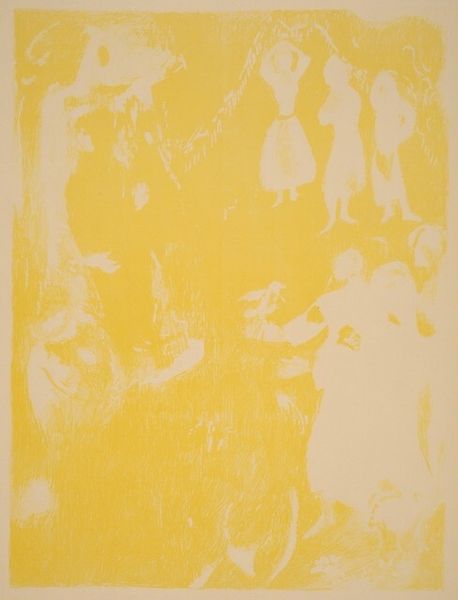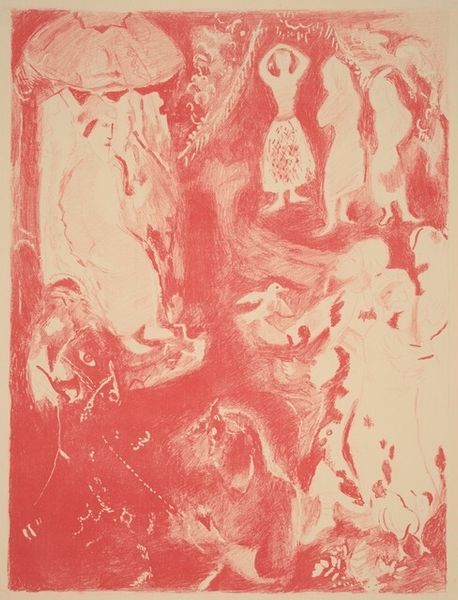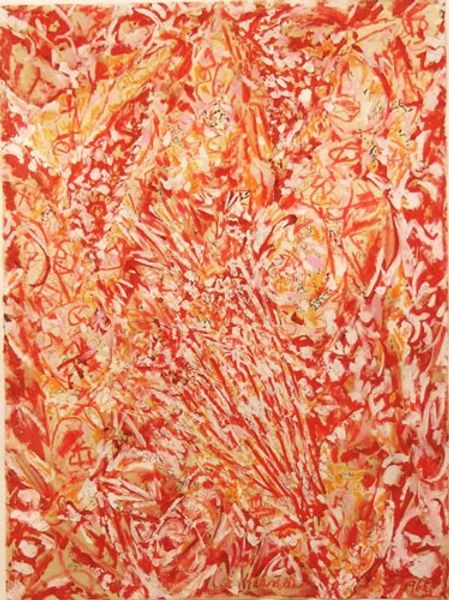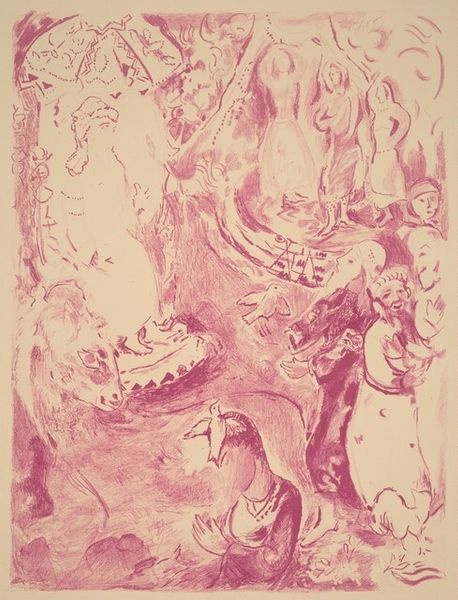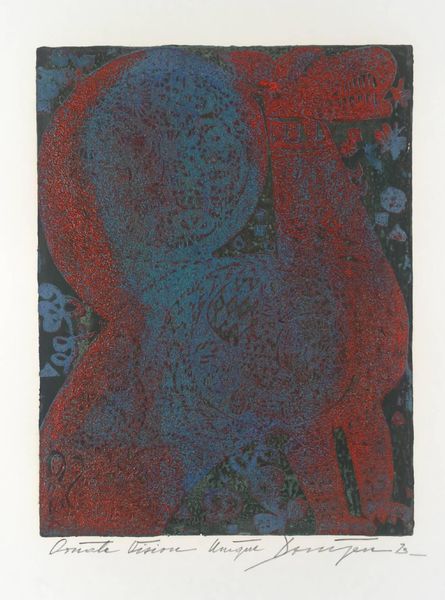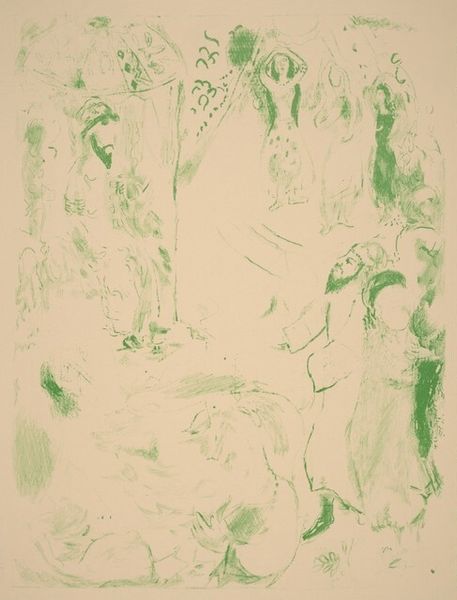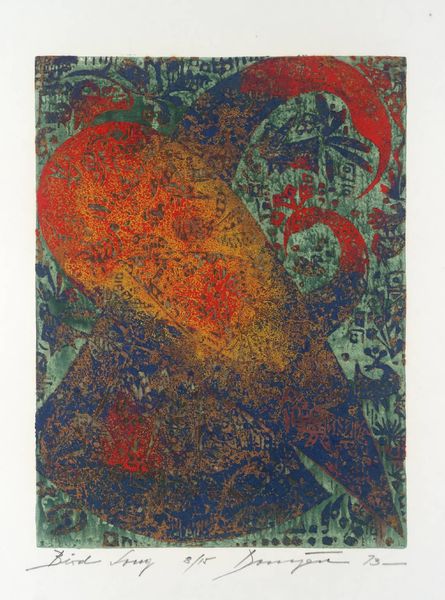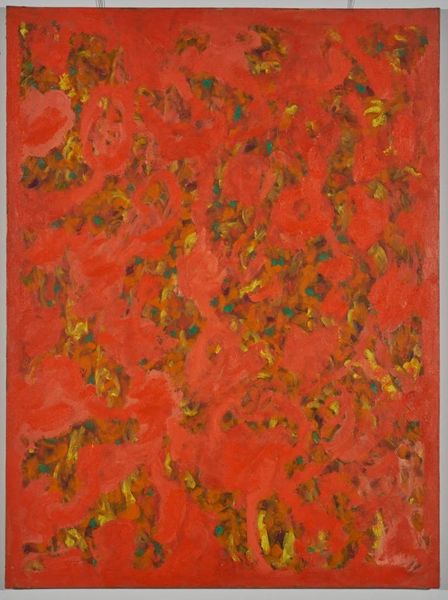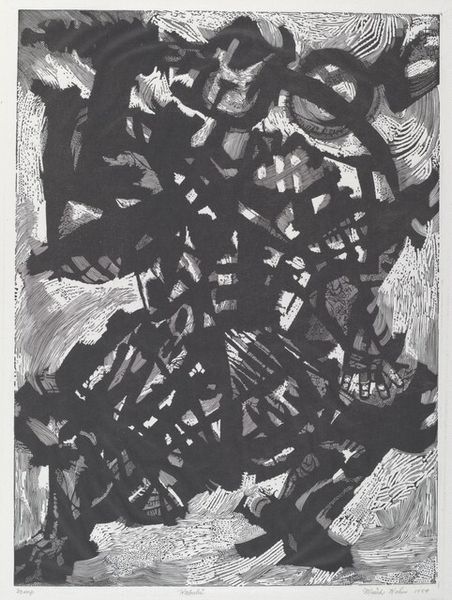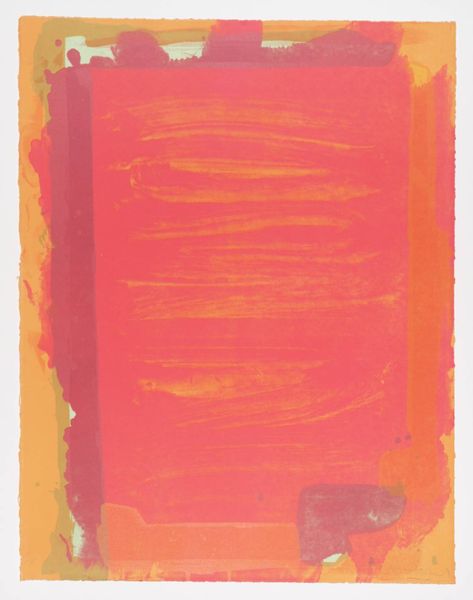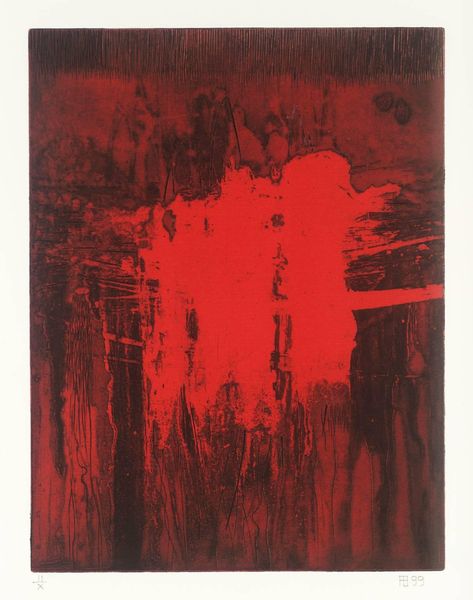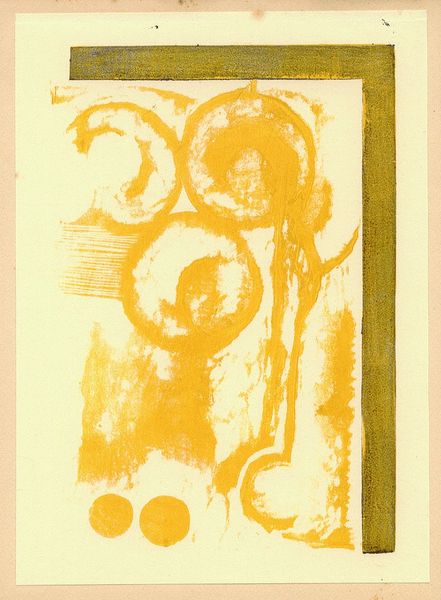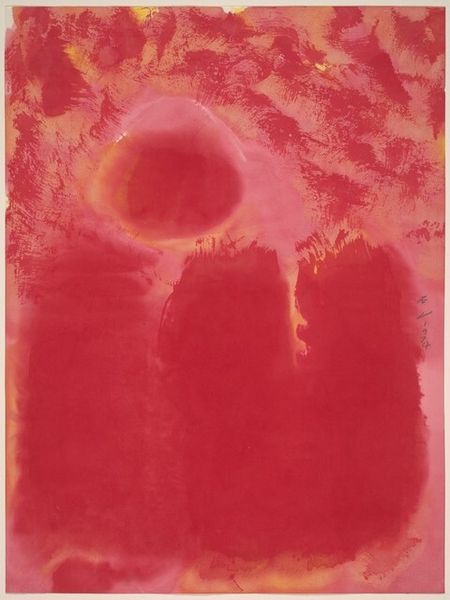
lithograph, print
#
lithograph
# print
#
landscape
#
figuration
#
surrealism
#
modernism
Copyright: National Gallery of Art: CC0 1.0
Curator: This is "The Tale of the Ebony Horse" by Marc Chagall, a lithograph created between 1945 and 1946. It’s awash in warm, almost monochromatic oranges and yellows. Editor: My first impression is one of faded memory, a dream rendered in ochre. The figures seem to emerge and dissolve simultaneously. Curator: It's fascinating how Chagall layers these figures and forms. "The Tale of the Ebony Horse" as a story speaks to the anxieties of control versus freedom, mirroring socio-political tensions following the end of the Second World War. Consider the ways identity and power dynamics intersect within post-war artistic expression. Editor: Absolutely. Horses frequently appear in Chagall's work and carry layered meanings. Here, given its connection to Arabian Nights, the horse as a mechanical figure perhaps represents technological advancements impacting humanity. But even beyond this single piece, horses frequently embody freedom, passion, even a link to the spiritual realm—a symbol deeply embedded in human consciousness. Curator: Indeed. And we can't overlook the feminine figures that appear throughout. Placed strategically around an enthroned female, what narratives are highlighted? Editor: Their stances seem like rituals, echoing archetypal imagery. Consider the hand raised in praise; it connects with a symbolic language used throughout millennia, found from cave paintings to religious iconography. Curator: Furthermore, think about the relationship between figuration and abstraction here. Are we seeing clear representation, or rather the dissolving of boundaries, reflective of existential uncertainty prominent in the mid-20th century? It's a statement of subjectivity. Editor: Yes, there is such an ethereal quality. Ultimately, the figures coalesce to explore deeper anxieties embedded within the modern psyche. This visual tension makes us question their symbolic implications. Curator: Considering historical context amplifies the layers present, which are often muted when focusing solely on artistic execution. It prompts one to engage with the imagery and ask crucial questions concerning race, gender, and cultural biases represented through art. Editor: For me, Chagall always evokes a longing for a mythic past through recognizable symbolic gestures. The magic of art allows it to hold numerous meanings within its hazy, sun-drenched layers.
Comments
No comments
Be the first to comment and join the conversation on the ultimate creative platform.
